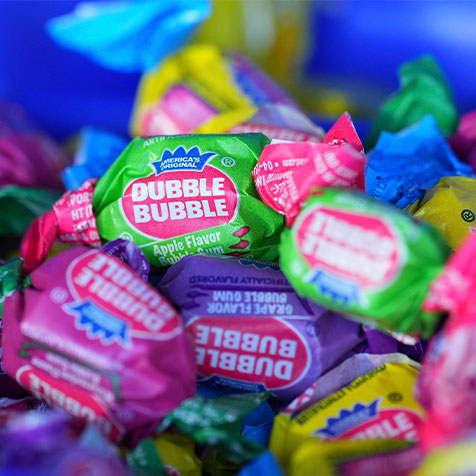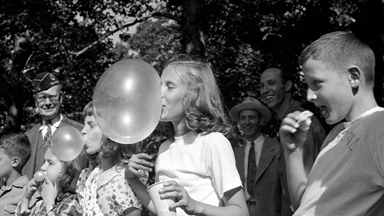Loading component...
At a glance
By Nigel Bowen
In 1928, in the US, Philadelphia’s Fleer Chewing Gum Company, which sold both chewing gum and baseball cards, was struggling.
Despite a booming economy, Fleer’s gum was not selling.
Walter E. Diemer, aged 23 at the time, oversaw Fleer’s books, not its manufacturing activities.
After Fleer’s president lost interest in creating a product with lower input costs and more consumer appeal, Diemer – an accountant by trade – spent a year tinkering with recipes.
Diemer was hoping to develop a new kind of gum that can be blown into a bubble.
One day, Diemer had Fleer’s factory workers mix gum base with wintergreen, peppermint, vanilla and cinnamon, and then add some food dye.
The dye was pink, because it was the only colour Diemer had on-hand. To this day, pink is the default colour for bubble gum.

The accountant behind bubble gum Walter E. Diemer never got rich off his famous creation but he brought joy to billions.
Diemer cut the resulting concoction, which came to be called “Dubble Bubble”, into 100 pieces and sent it to the local store, which sold it for one penny a piece – equivalent to US$0.17 (A$0.25) today.
Within hours, it was all gone. Then the Great Depression hit, and bubble gum, a cheap treat for children and more than a few adults, took off in Prohibition-era America.
In the following decades, bubble gum spread across the globe, with the notable exception of Singapore.
Neither Diemer nor his employer patented bubble gum, so they did not get rich as they might have.
While Diemer died in 1998, aged 93, Fleer ceased operations in 2005.
The chewing and bubble gum market remains in rude good health, and is projected to be worth US$40.6 billion (A$59.4 billion) by 2028.

